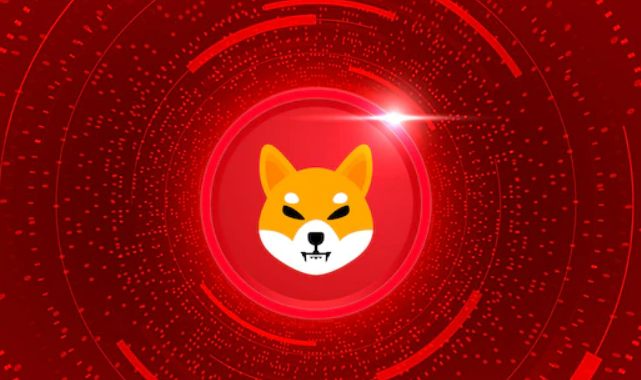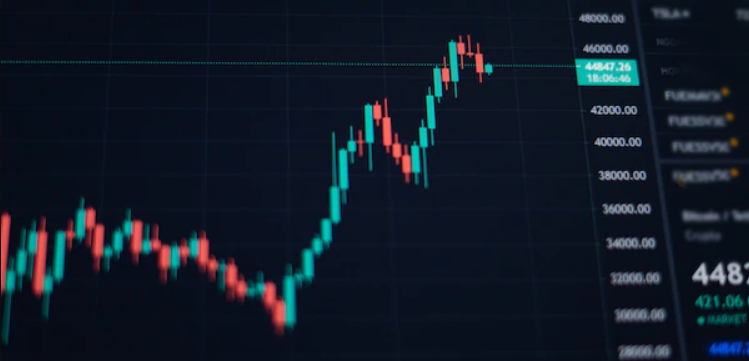
Haiden Holmes
Mar 23, 2022 10:39

Solana is one of the world's most popular cryptocurrencies, and its programmable blockchain is now a superior option to Ethereum. While others were dumping, the SOL token just surged to a new all-time high of $213.
For the past few weeks, the cryptocurrency market has been in a downward trend. Bitcoin has lost its position above the $50,000 threshold, while Ether has been unable to break above the $4k barrier in recent months.
Solana, despite the market's downward tendency, is one of the cryptocurrencies that stood out. Solana (SOL) set a new all-time high of more than $200 at a time when the other major cryptocurrencies were experiencing enormous losses. Many traders, investors, market players, and those outside the Bitcoin field were drawn in by this unprecedented price action.
As one of the world's biggest cryptocurrencies, it's no wonder that many people want to know more about Solana and why it grew in value during a time when other cryptocurrencies were losing value. This essay delves into the fundamentals of Solana and explains its recent surge.
The first and most apparent question is who Solana is. Solana is a blockchain platform created primarily to run decentralized apps. It is comparable to Ethereum and Cardano, two of the most popular dApp blockchains.
Solana, on the other hand, is an open-source project now managed by the Geneva-based Solana Foundation. Developers from San Francisco-based Solana Labs created the blockchain. Solana has garnered popularity by providing something that the Ethereum blockchain has yet to provide: quicker operation and reduced transaction costs.
Solana, unlike Ethereum, is a PoS (proof of stake) blockchain, making it less harmful to the environment than popular PoW (proof of work) blockchains like Ethereum and Bitcoin. It has the ticker SOL and a naive coin named Solana.
Solana's proof of stake technology is now popular in the cryptocurrency world. Unlike proof of work, which requires vast amounts of energy to run a blockchain, proof of stake requires validator nodes on the network to stake something. The validators stake the SOL tokens in the case of Solana. Although validators use electricity to function, their usage is far lower than that of PoW miners.
Solana is a blockchain that can be programmed.
Solana's best description is that it is a programmable blockchain. It is now one of the bitcoin industry's quickest programmable blockchains. It competes heavily with other programmable blockchains like Ethereum and Cardano.
Because of their extensive features and possibilities, programmable blockchains are extremely popular in the bitcoin world and beyond. They can hold smart contracts, which are little bits of code. When the contract's requirements are satisfied, smart contracts may be configured to do specific activities.
For example, if you rent a car, the dealership may launch a smart contract that automatically reimburses your deposit if you return the car in excellent condition. Ethereum was the first and has remained the world's top programmable blockchain. The Ethereum blockchain has attracted a wide spectrum of developers who utilize it to construct decentralized apps during the last few years (dApps).
However, the Ethereum network continues to fall short in other terms, particularly scalability. Congestion on the network can occasionally result in exorbitant prices. The developers are presently working on ETH 2.0, which will transform the blockchain from a proof-of-work system to a proof-of-stake mechanism. The ETH 2.0 update is anticipated to address the scalability issue and reduce Ethereum's carbon impact.
Because of Ethereum's flaws, additional programmable blockchains have emerged, stealing part of Ethereum's market share. Solana, Tezos, and Cardano, for example, are intended to be less expensive, quicker, and more sustainable than Ethereum. Solana is currently the quickest of the bunch.
Ethereum is presently the market leader in the smart contract area, with approximately 70,000 nodes compared to Solana's 1,000. However, Solana is regarded as an Ethereum killer because to its creativity and approach to addressing some of Ethereum's flaws.
Solana's proof-of-history (PoH) protocol is changing the way blockchains function. By enabling validators to control their own clock, the transaction verification process is sped up since nodes no longer need to invest processing resources before they can check multiple timestamps. As a result, the Solana network's transaction processing performance has increased. The Solana network can handle up to 60,000 transactions per second, outperforming Bitcoin, Visa, XRP, and Ethereum combined.
Aside from transaction speed, the Solana blockchain has much cheaper expenses. One of Ethereum's primary difficulties, as previously stated, is its high gas prices. On the Ethereum network, users pay up to $50 to conduct a transaction. Bitfinex spent $23.7 million earlier this week to transport $100,000 USDT on the Ethereum network. Solana charges substantially reduced rates, often about $0.00025 each transaction.
Solana is now one among the world's quickest programmable blockchains. It is capable of processing more than 50,000 transactions per second (TPS). According to the creators, as the network expands, transaction speeds can exceed 700,000 TPS. This is considerably superior to Ethereum's current processing rate of 15 to 45 TPS.
Many developers have been drawn to the blockchain by Solana's speed and low transaction charge. The Solana project presently hosts a diverse set of dApps and smart contract initiatives. As a result, it is one of the world's most commonly utilized blockchains and cryptocurrencies.
Solana is now one among the world's quickest programmable blockchains. It is capable of processing more than 50,000 transactions per second (TPS). According to the creators, as the network expands, transaction speeds can exceed 700,000 TPS. This is considerably superior to Ethereum's current processing rate of 15 to 45 TPS.

Many developers have been drawn to the blockchain by Solana's speed and low transaction charge. The Solana project presently hosts a diverse set of dApps and smart contract initiatives. As a result, it is one of the world's most commonly utilized blockchains and cryptocurrencies.
A diverse assortment of cryptocurrencies are finding a home on the Solana blockchain. Among them are the following:
Chainlink
The Graph
Waves
Serum
Audius
REN
Raydium
Coin98
Oxygen
Akash Network
Mango Markets
Velas
Civic
Bonfida
Star Atlas
Hxro
Orca
Kin
Solanium
Ramp
Step Finance
MAPS
PARSIQ
Frontier
Saber
Cope
Only 1 and hundreds of others
Solana (SOL) is without a doubt one among the best-performing cryptocurrencies this year. SOL has pushed its way into the top 10 cryptocurrencies by market capitalization, bypassing Dogecoin and Polkadot and contending with XRP.
Despite its current price of barely more over $170, Solana hit a new all-time high of $213 on September 9. This occurred at a time when the whole bitcoin market was losing the majority of its value.
Although Ethereum and its competitors, including Cardano, Polkadot, Dfinity, Terra, Polygon, and Avalanche, have all raised their prices dramatically in the last year, Solana's success has been exceptional.
One of the main reasons for its rapid growth is because the Solana ecosystem is supported by FTX, one of the world's largest digital asset exchanges. Over the last several months, FTX has launched a slew of Solana-based initiatives.
The Solana project is also supported by some of the most prominent cryptocurrency investors, including Alameda Research, Andreessen Horowitz, and Polychain. Solana's transaction fees are also cheaper than those of most of its competitors.
According to several market analysts, Solana is at the start of its growth cycle and has the potential to equal Ethereum in terms of price and market value over the following few years. As a result, some investors remain optimistic about the Solana project's medium and long-term prospects.
Solana is one among the world's top cryptocurrencies. The cryptocurrency and its blockchain are anticipated to develop further, posing new problems to the Ethereum network.
For good reason, Sam Bankman-Fried is quite positive about the Solana blockchain. The developers keep innovating and pushing for new innovations. While Ethereum continues to be the market leader, Solana and Cardano will continue to nibble into Ethereum's market share.
In terms of price performance, several analysts believe Solana's price will surpass $1,000 in the next months. If acceptance and growth continue, SOL might reach the price of ETH, which is now around $3,500, over the next few years.

Mar 23, 2022 10:03

Mar 23, 2022 11:06